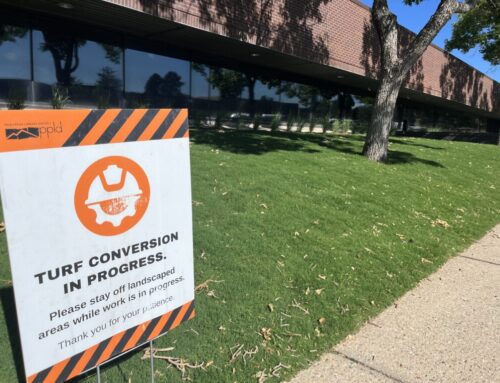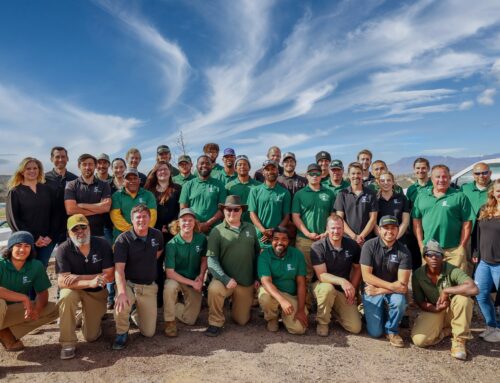A lush, vibrant lawn in Colorado Springs can transform your yard and bring beauty into your everyday life. This comprehensive guide will walk you through everything from choosing the right type of sod or seed, the best time to to install, and much more.
Understanding Sod Installation in Colorado Springs
Colorado Springs’ semi-arid climate means that choosing the right type of sod and proper installation are crucial to achieving a durable and beautiful lawn. Here’s what you need to know to get started:
Best Types of Sod for Colorado Springs
- Kentucky Bluegrass: Popular for its lush appearance and ability to recover from drought, this grass is best used in a high traffic area, such as a backyard. Because it is a high water use grass, its use is starting to be restricted throughout the state, and is best chosen for specific areas rather than the entire yard.
- Tall Fescue: While not as drought tolerant as Kentucky Bluegrass, Tall Fescue can use up to 30% less water. It’s deep green in the spring and fall makes it beautiful, but it can struggle during the high heat of the summer.
- Tahoma 31: A newer introduced option, Tahoma 31 is a warm-season burmudagrass. It can use up to 60% less water than Kentucky Bluegrass and looks beautiful during the summer. It loves the sun, and struggles in more shaded options, and is not a good option in elevations above approximately 7000ft. It only grows 4” tall, so it is a good option for low-maintenance and drought resistance. It will come out of dormancy later than Kentucky Bluegrass, and is green May – early October.
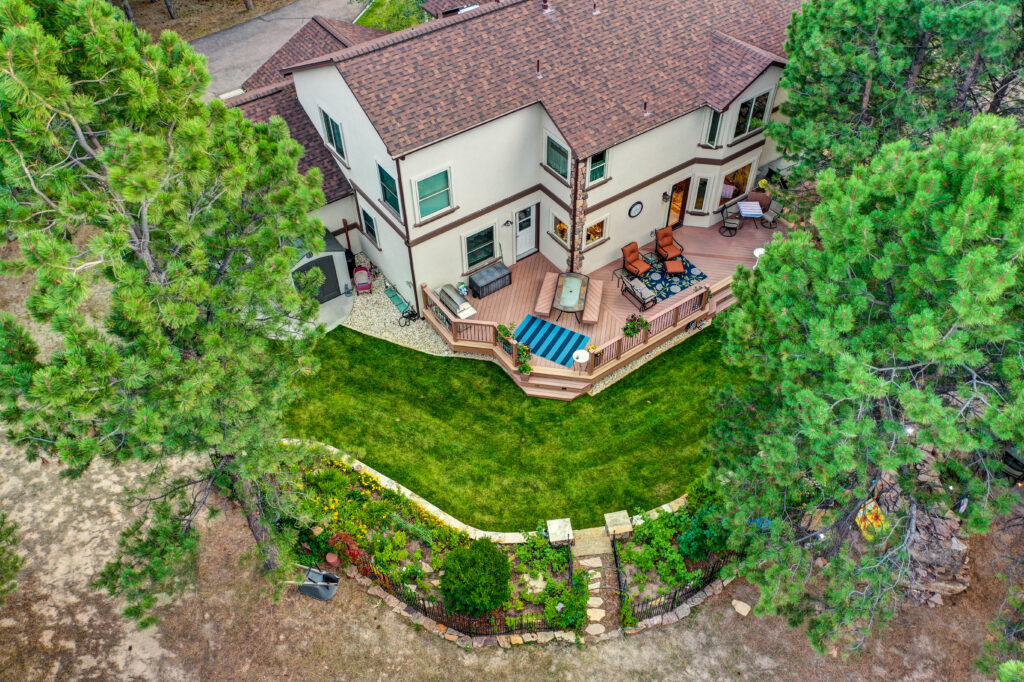
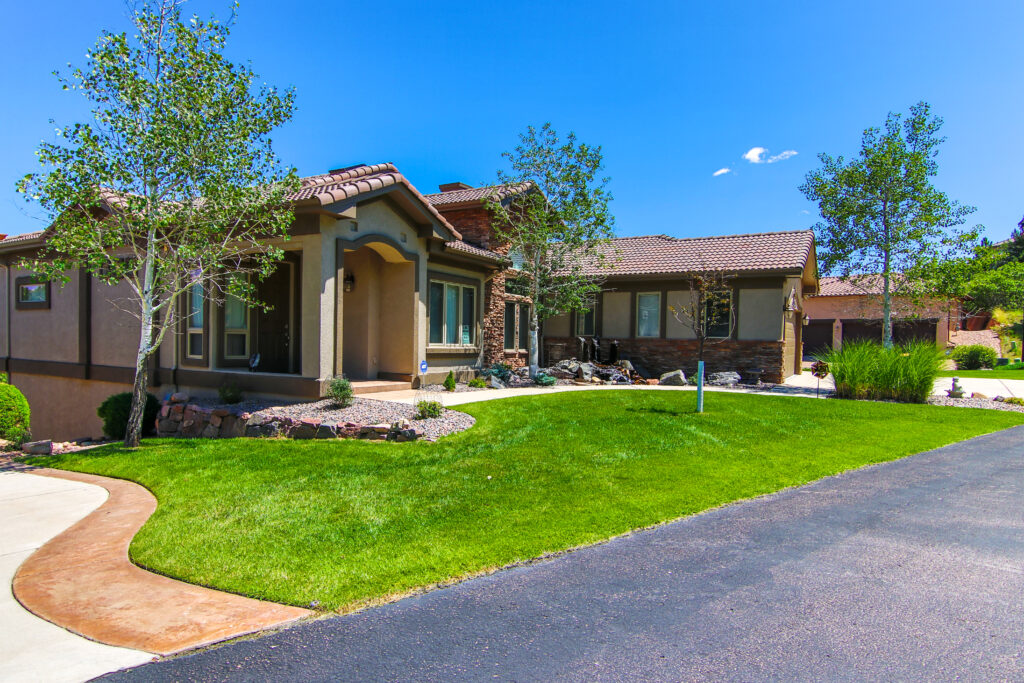
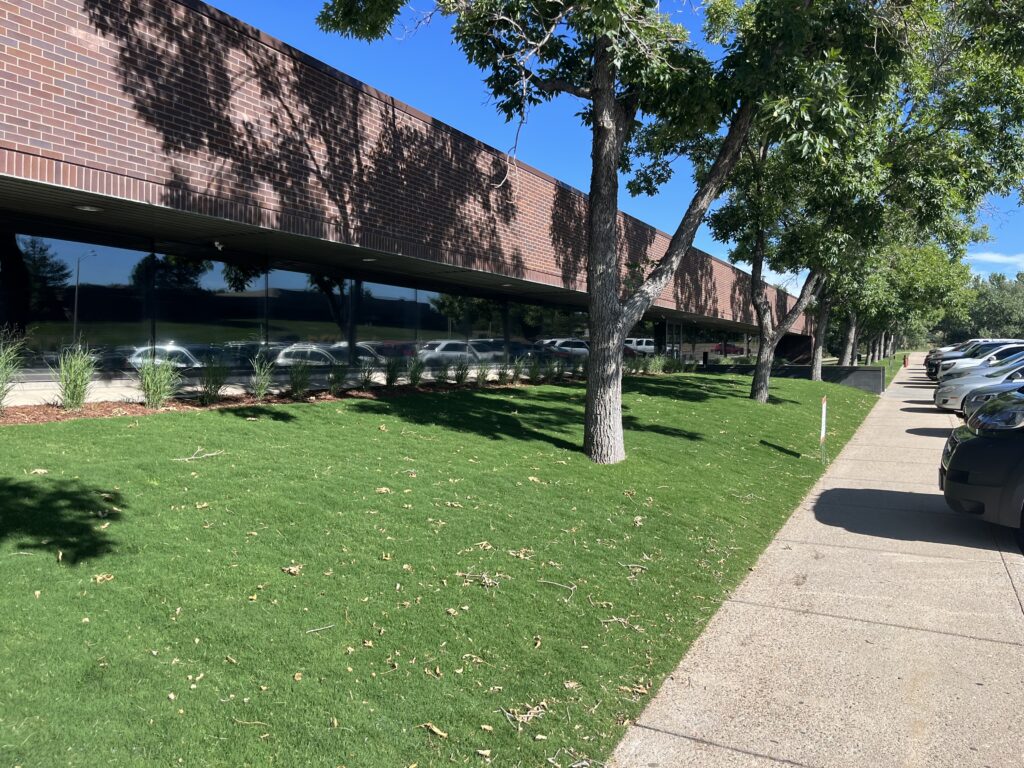
Best Types of Seed for Colorado Springs
- Blue Grama/Buffalograss mix: Beautiful native warm-season mix that uses half the water of Kentucky Bluegrass. Green May – September, but needs full sun and not a good option above 7000ft. Is a low-maintenance option that can be mowed 1x/month.
- Low Grow Mix: Usually a cool-season mix of fescues and native bluegrasses, this cool season mix is good for higher elevations above 7000ft. More shade tolerant than blue grama/buffalo. Not all low grow mixes are the same, beware of invasive species.
- Native Prairie/Foothills Mix: While you wouldn’t want this for a play or high traffic area, this mix is great for blending into a native area around your home, or a dedicated area, such as a front yard for a native and low-maintenance look. This option is a mix of cool and warm season grasses, and will look best mid-summer and fall after coming out of dormancy. This prairie look will only need to be mowed 1x per year, and the height ranges from 12-36”.
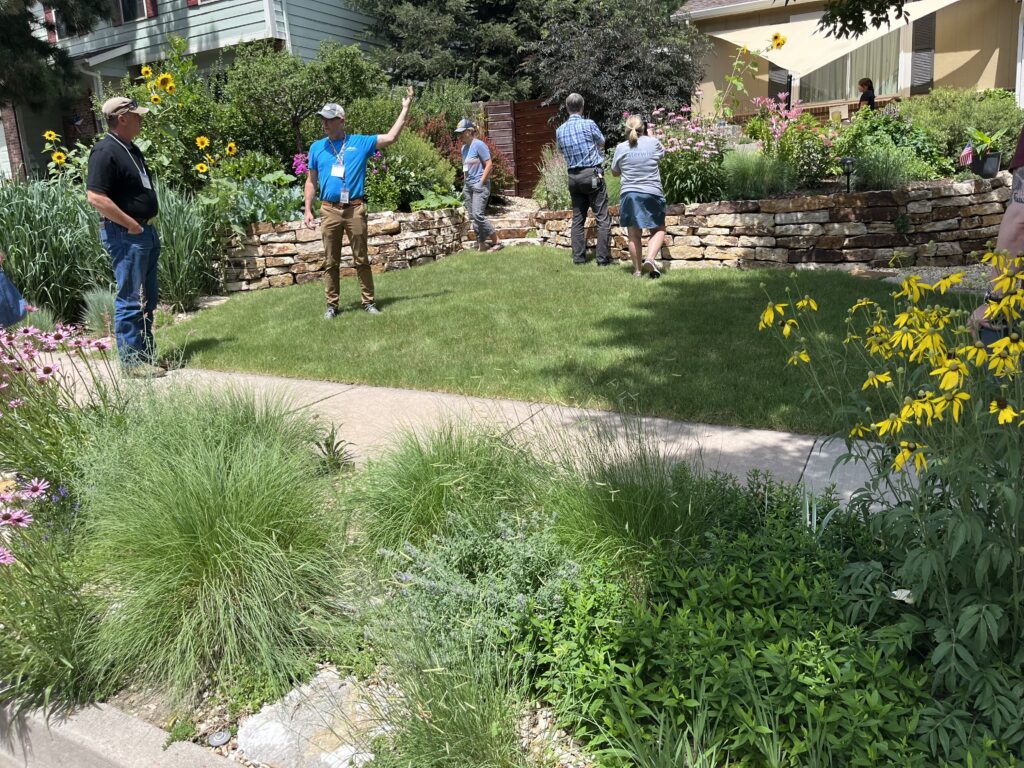
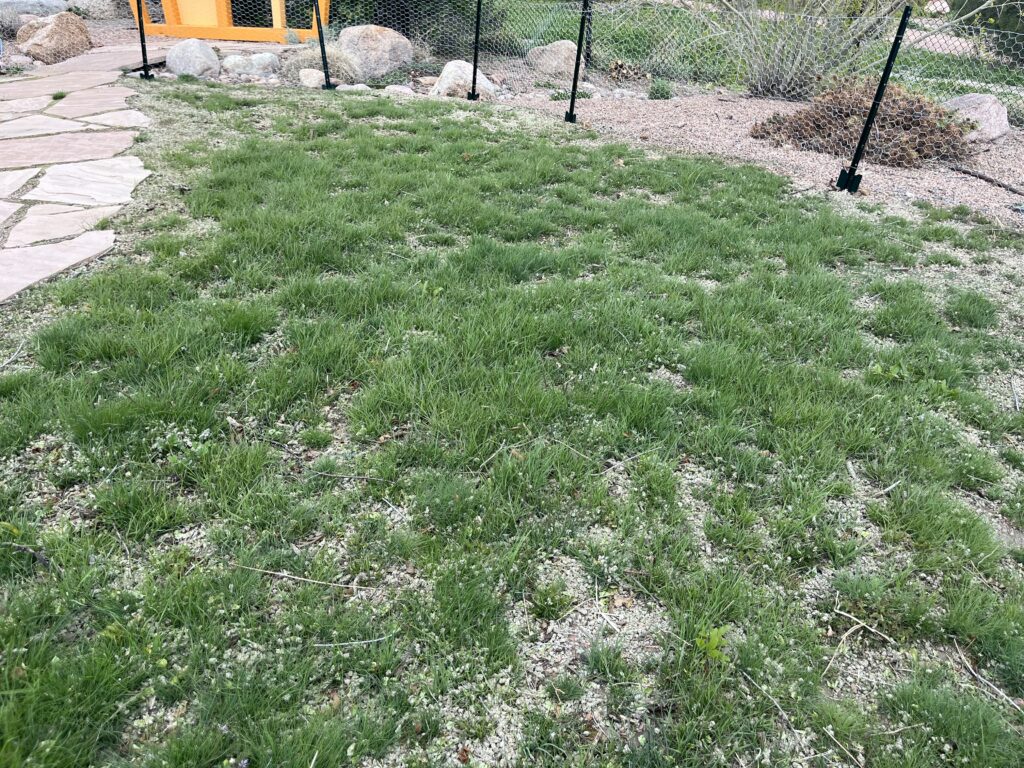
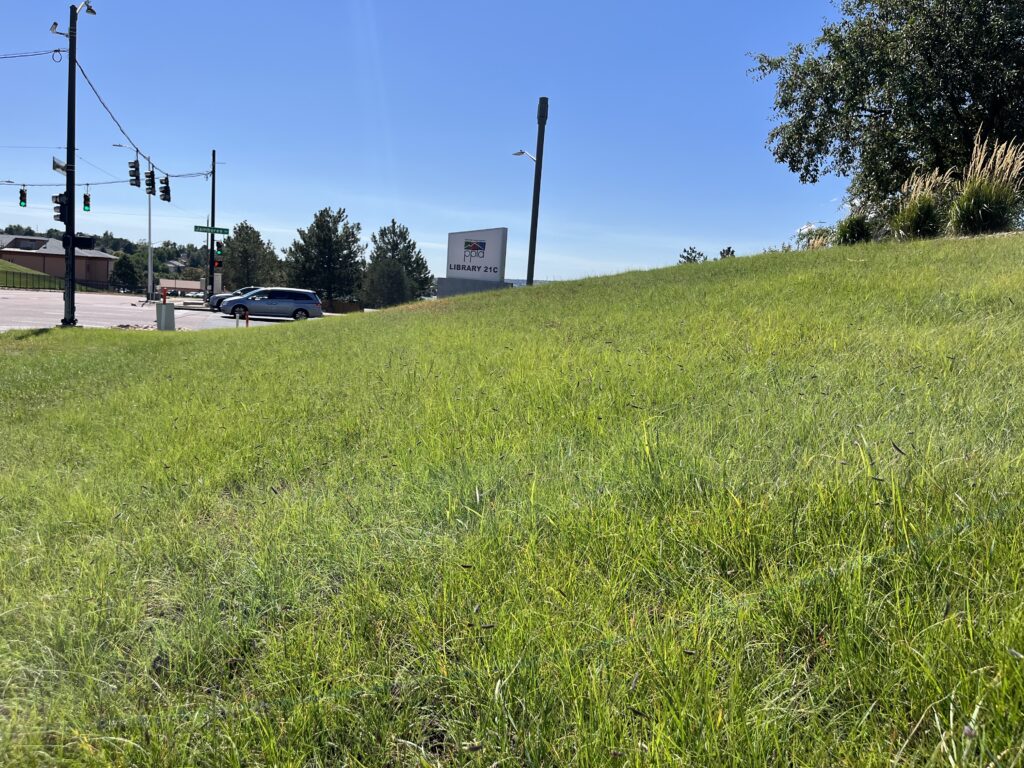
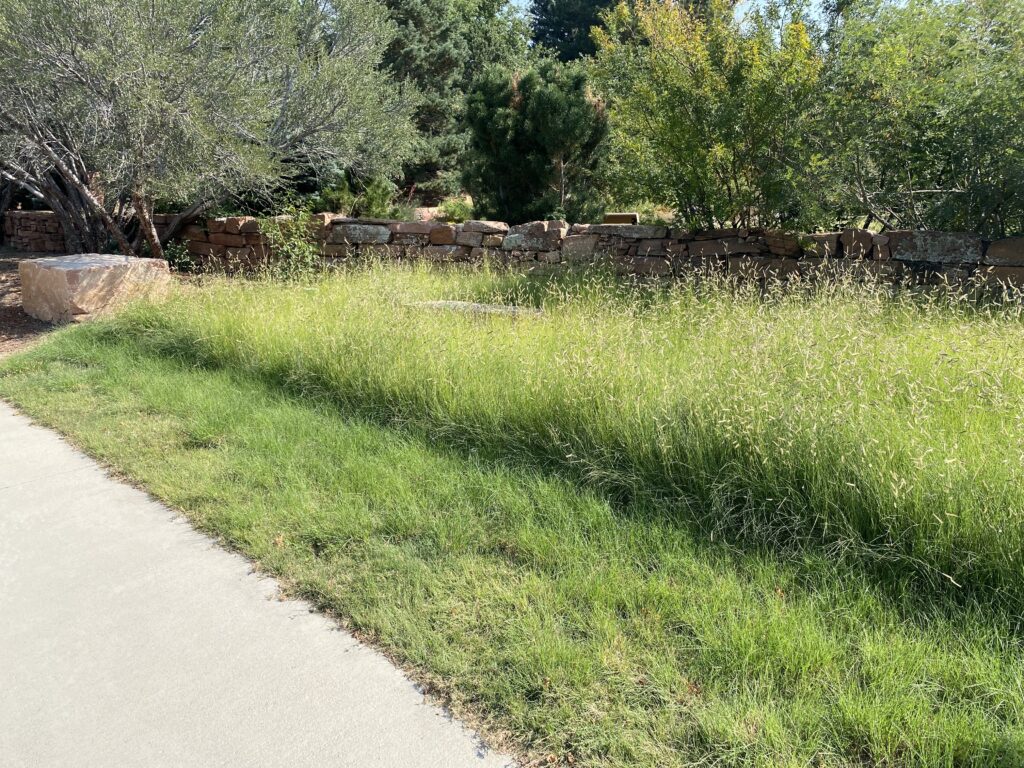
Choosing the right type depends on your specific lawn needs, aesthetic preferences, and willingness to maintain.
When to Install Sod or Seed in Colorado Springs
The best time to lay sod or install seed will depend on the variety used. A cool season grass (Kentucky Bluegrass, Tall Fescue, Low Grow Mix) in Colorado Springs is best installed during the spring (April to June) or early fall (September to October). These months offer milder temperatures and more consistent moisture levels, which are ideal for sod rooting. Warm season grasses will best be installed mid-summer (June – August), or during the winter for next spring germination. Installing during this time ensures that it will have the best chance to establish a robust root system before the extreme temperatures of summer or winter.
How Long Does It Take for Sod to Root in Colorado?
Typically, sod takes about 2 to 3 weeks to establish in Colorado, depending on the weather conditions and the type of grass. During this period, it’s crucial to ensure adequate watering to help roots penetrate the soil deeply. After about a month, you should start to see strong root development, anchoring the new sod into the ground.
How Long Does It Take for Seed to Establish in Colorado?
You will start to see germination 7-21 days after sowing seed, depending on the variety and weather conditions. Good growth can be achieved in the first year with irrigation, while a second year and some spot overseeding will likely be needed for full establishment. Unirrigated areas are likely to not grow, and unirrigated native areas take 5-10 years for full establishment (usually about 70% cover is good for no irrigation).
Additional Tips and Considerations for Sod Care in Colorado Springs
- Watering: Newly installed sod requires frequent watering to encourage rooting. Gradually reduce watering frequency as the sod becomes established. See a suggested irrigation schedule here.
- Mowing: Wait until the sod has rooted before you mow for the first time. Keep your mower at a higher setting initially to avoid cutting too much off and stressing out the grass.
- Fertilization: Apply a starter fertilizer during installation and continue with regular feedings according to the specific needs of the grass type.
- You will need an establishment permit from Colorado Springs Utilities to water your new lawn as well as a receipt showing your soil amendment. See more information here.
- Installing a native lawn, or a lawn from seed will require significant additional work with weed control and patience. These lawns will look much better year 2 and beyond, so it’s good to keep that expectation in mind.
Conclusion
Sod installation in Colorado Springs offers an instant solution to achieving a beautiful lawn. Understanding the types of sod suitable for the area, the best installation times, and proper care will ensure that your investment thrives.
By providing detailed insights into each aspect of sod installation and care, this guide aims to help Colorado Springs residents make informed decisions to maximize their investment and enjoy a beautiful, healthy lawn for years to come.

